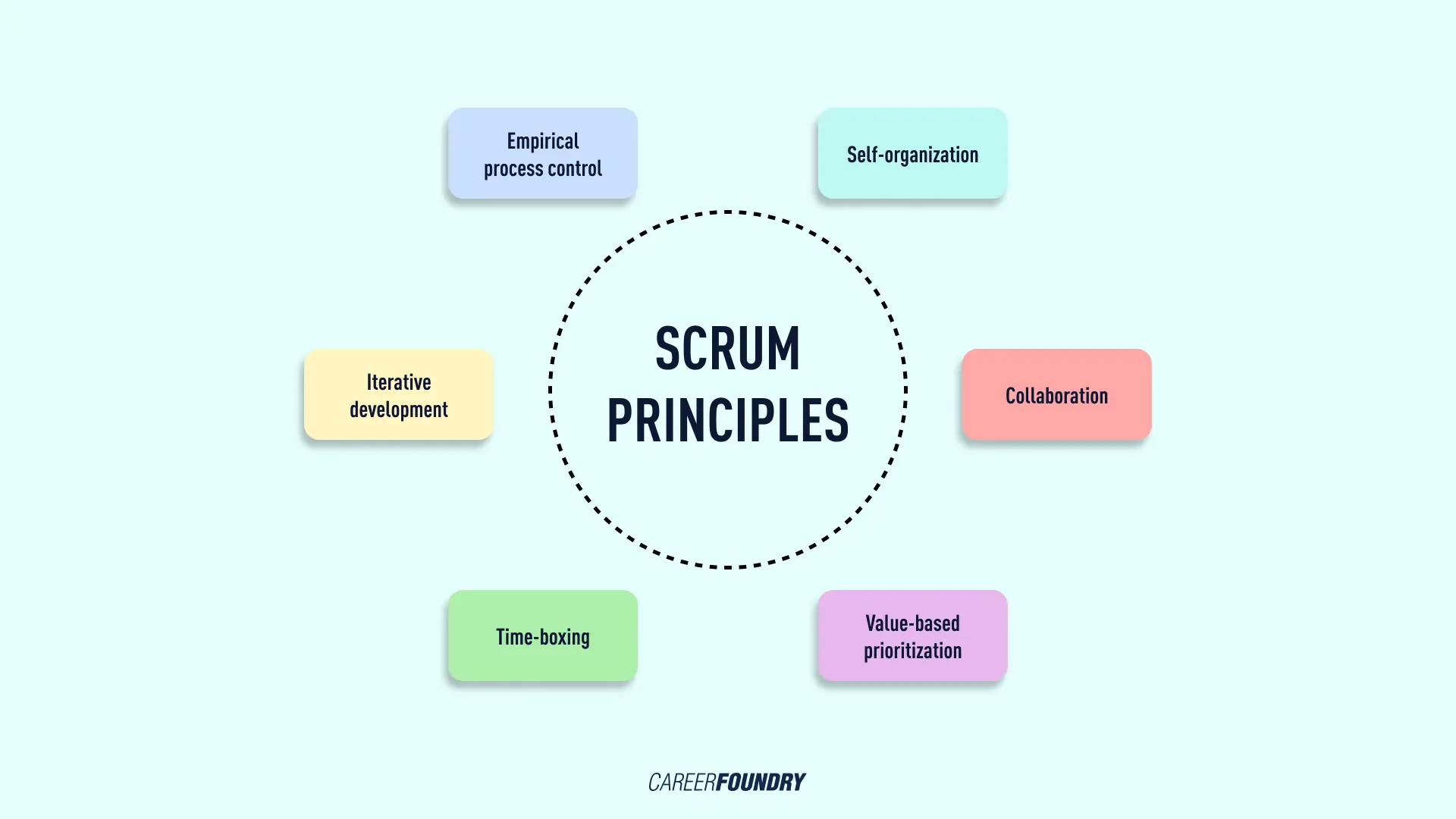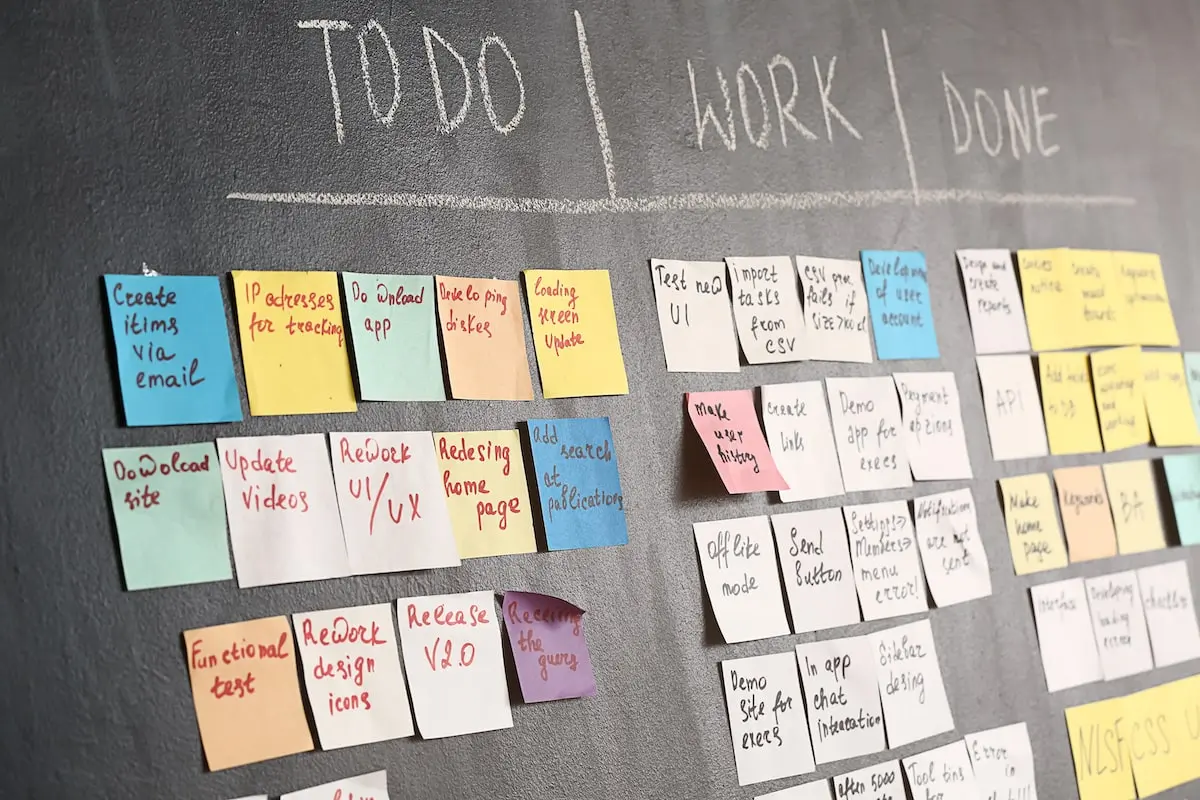Whether you’ve recently transitioned into a product management role or have been working in the product sphere for some time, understanding the differences between the two popular project management frameworks—Kanban vs Scrum—is essential.
Both Kanban and Scrum are methodologies used to structure and optimize workflow, but how they approach that aim differs significantly. While Kanban focuses on task visualization and continuous flow, Scrum is all about breaking down projects into smaller chunks and iterative delivery cycles.
But what does this mean for product managers, and when should you use one versus the other? This article aims to provide a clear and concise overview of these two popular frameworks, so you can make the best choice for product delivery.
Here’s what we’ll cover:
- Kanban vs Scrum
- Kanban vs Scrum: Which is better for product managers?
- When to use Kanban vs Scrum
- Final thoughts
Just use the clickable menu to jump to the sections you’re most interested in. With that, let’s get started.
1. Kanban vs Scrum
The two project management methodologies, Kanban and Scrum, offer powerful tools for managing projects, allowing teams to be more efficient and productive.
Both are rooted in Agile and Lean approaches, with Scrum being more closely associated with the Agile movement. Ultimately, using these methodologies enables teams to continually improve processes, leading to better organizational results.
To better understand these differences, we’ll first consider the fundamental principles of each project management tool and then move on to more detailed comparisons.
What is Kanban?
The Kanban method is a visual system for organizing and streamlining work processes. It focuses on continuous flow and collaboration to maximize efficiency and minimize wasted effort—the core principles of Lean methodology.
The Kanban board is the system’s key element. It contains cards representing tasks or items to be worked on. The board also has several columns detailing the different stages of a project, such as “in progress,” “on hold,” and “completed.” This enables development teams to visualize a project’s progress and identify bottlenecks and potential improvements.
What is Scrum?
The Scrum framework is an iterative approach to delivering projects, which is especially popular among software development teams.
It breaks down complex tasks into smaller chunks, which can then be completed within a fixed time frame, also referred to as a “sprint.” These principles originate from Agile methodology, which maximizes flexibility and adaptability.

The main element of the Scrum framework is the scrum team—a self-organizing, cross-functional collection of individuals working together to deliver the project. This team consists of a scrum master, a product owner, and the development team. In scrum meetings, the team works together to identify tasks and establish priorities, resulting in a better understanding of the project’s progress.
If you want to learn more about Scrum principles and how to apply them to product management workflows, you can read our detailed Scrum guide for product managers.
Kanban vs Scrum compared
Having looked briefly at the basics of each methodology, let’s now compare them side-by-side to identify critical differences. The easiest way to do this is to use a table that covers the main features of each framework.
However, it’s important to keep in mind that the two project management frameworks are not in competition with each other. As we will see in the next section, there are situations where both Kanban and Scrum could be used together for greater effect.
| Kanban | Scrum | |
| Methodology | Lean methodology | Agile methodology |
| Origin | Lean manufacturing | Software development |
| Key principles | Continuous improvement, workflow visualization, limiting work-in-progress | Empirical process control, inspect and adapt, self-organization and prioritization, time-boxed iterations |
| Aims | Continuously improve workflow through visualization | Improve work processes through experiences, self-organization, prioritization, and reflection on wins and losses. |
| Cadence | Continuous flow | Fixed-length sprints (typically two weeks) |
| Practices | Visualize the flow of work, limit work-in-progress to optimize flow, incorporate feedback loops to identify and eliminate bottlenecks | Sprint planning, daily scrum, sprint review, and retrospective, inspect and adapt the process to improve product and process |
| Flexibility | Flexibility in adjusting to changes in work items and priorities | Flexibility in adjusting the process during the sprint retrospective |
| Roles | No specific roles defined, individuals and interactions over roles and tools | Product owner, scrum master, and development team |
| Metrics | Velocity, cycle time, throughput | Velocity, sprint goal attainment, sprint backlog completion, defect density |
2. Kanban vs Scrum: Which is better for product managers?
As a product manager, you’ll likely come across Kanban and Scrum when working on projects. The right choice will depend on your team’s specific circumstances and needs.
For instance, if your team needs to speed up development or has a dynamic task list, Scrum might be the better choice. By contrast, Kanban is more suitable for teams that prefer a high level of collaboration and process optimization.
There are also situations where using Scrum and Kanban together could prove beneficial. For example, a cross-functional team might use Scrum for sprint planning and Kanban for maintenance tasks outside of the sprints. It’s important to experiment and find the right combination of methodologies for optimal results.
So, rather than deciding which framework is “better” per se, product managers should focus on the different use cases for each and consider when it’s best to employ them, individually or in combination.
What if you could just combine the two of them? Enter Scrumban. This agile methodology is a fusion of both, and is growing in popularity among product managers and owners alike.

3. When to use Kanban vs Scrum
There are various ways of determining which framework is best for a given project or team. As a product manager, you should consider factors such as:
- the type of project and its complexity
- the desired speed of delivery
- the size and makeup of the team
- how dynamic tasks are
- how much collaboration is needed
- budget constraints, and so on.
Once you’ve evaluated these factors, it may become clear which framework suits your product management process.
But if that’s not enough, here are ten practical guidelines for when to use Kanban vs Scrum:
When to use Kanban
You may want to use Kanban when:
- The team size is too large for a scrum sprint
- The team is distributed or working remotely
- Tasks are unpredictable or dynamic
- The project requires adaptation to changing requirements
- There’s no need for a scrum sprint
- There’s already an established workflow
- The focus is on continuous delivery and improvement
- Resource constraints exist
- The goal is to maximize efficiency and productivity
- The project involves a lot of team/stakeholder collaboration
When to use Scrum
You may want to use Scrum when:
- The project is complex and needs to be broken down into smaller tasks
- The team must complete a fixed number of tasks in a given timeframe
- The team is co-located and able to work closely together
- There’s a need for regular sprints and performance reviews
- The focus is on scheduling and meeting deadlines
- The goal is to increase team velocity
- The project involves iterative development
- The project requires a high degree of predictability and planning
- There’s a need to deliver features and launch products quickly
- The project requires a transparent process for managing and prioritizing tasks
4. Final thoughts
Scrum and Kanban are two of the most popular project management frameworks used by product managers.
While neither is necessarily better than the other, their different approaches and underlying principles make them better suited to different projects and teams. While Kanban works well for teams that prefer collaboration and Lean process optimization, Scrum is better suited to dynamic tasks and fast-paced delivery in Agile environments.
However, product managers may also find success when combining the two methodologies. For instance, Kanban can be used alongside Scrum to better manage maintenance tasks outside of sprints and improve continuous delivery.
Keen to get your product career underway? Sign up for this free introductory product management course, everything you need to get started is just a few clicks away.
Otherwise, if you’d like to learn some more about the world of product management, check out these articles:
